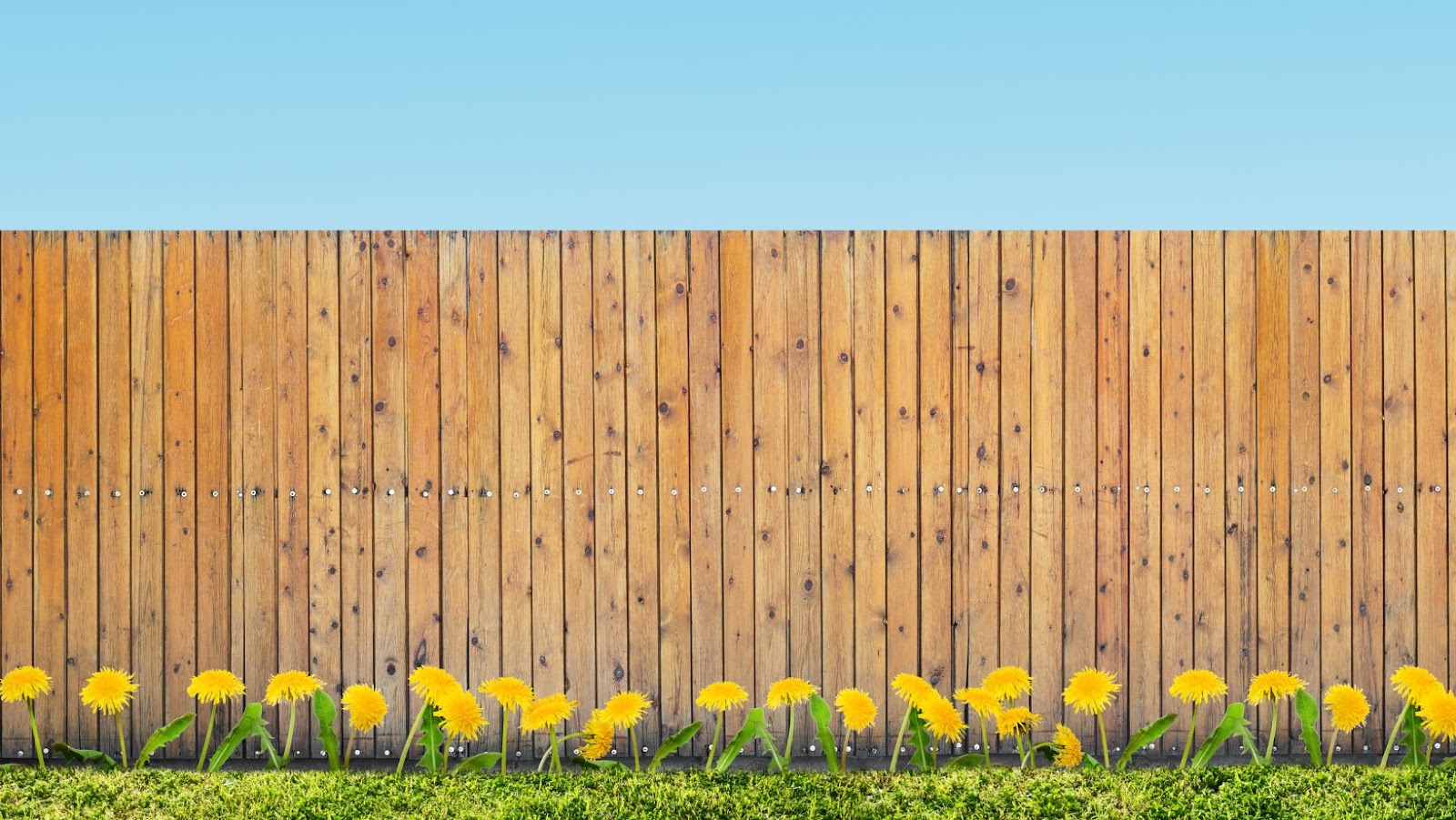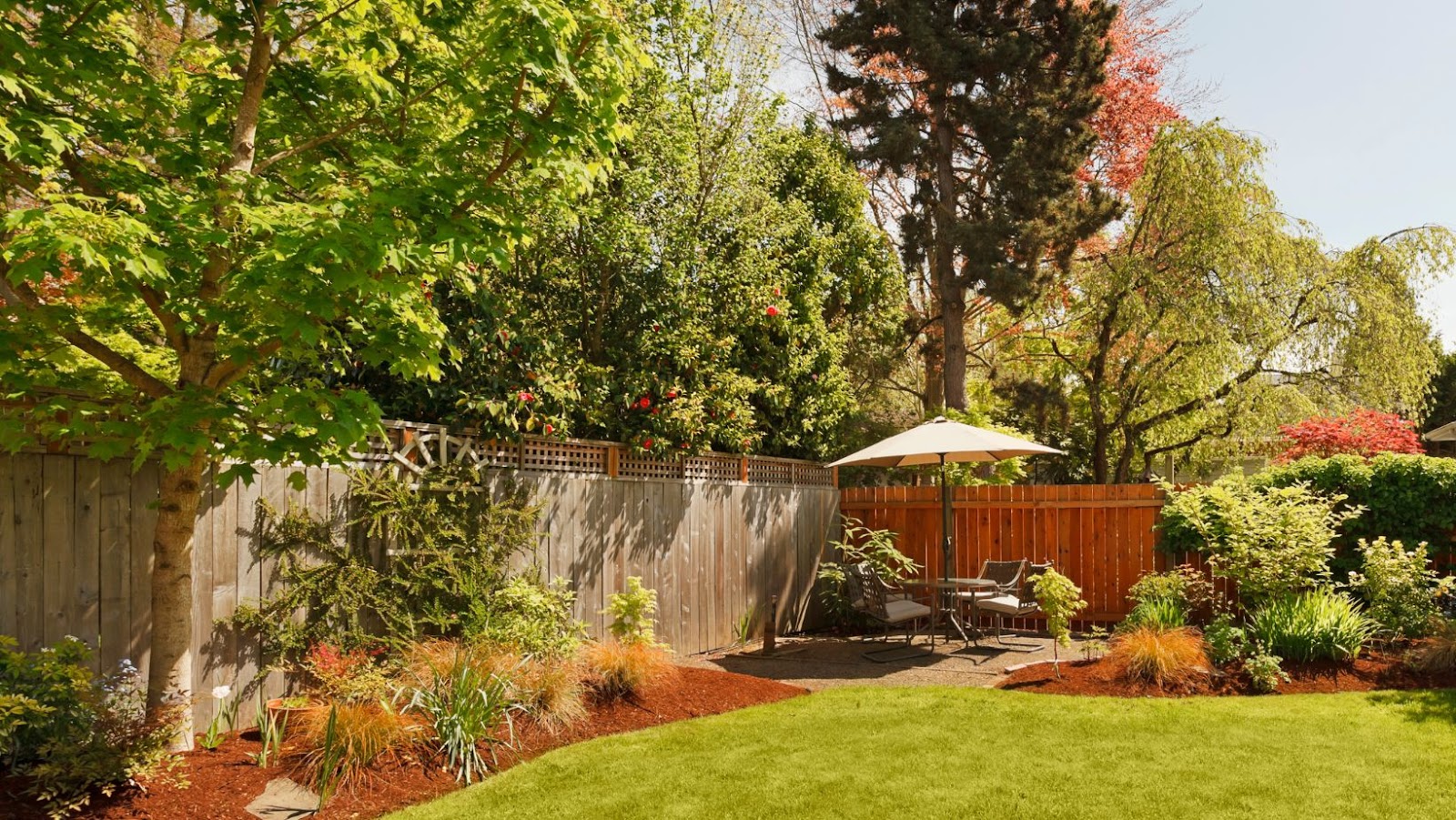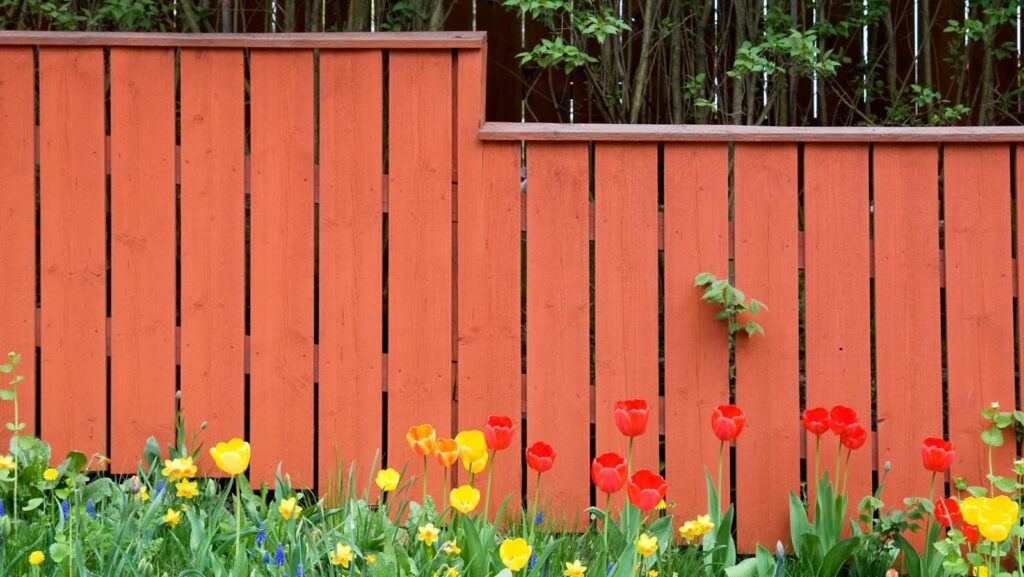A backyard fence is a great way to improve the look and safety of your outdoor living space, but installing a fence can be expensive. Depending on the size and type of materials used, the cost can range from hundreds to thousands of dollars.
To ensure that you are making an informed decision before purchasing a fence, it’s important to understand what factors affect the cost. This article will provide an overview of some of the elements that may influence pricing when selecting a backyard fence.
By learning more about these factors, you can determine which option is best for your budget while still meeting your aesthetic and safety needs. From material choice to additional installations, this guide will help you consider all aspects before making your purchase:
- Material choice
- Additional installations
How much does the average backyard fence cost
The type of fence you choose for your backyard can significantly impact the cost of the project. There are many different types of fencing materials available, ranging from traditional pickets to modern panels. Each material has its own unique cost, durability, looks, and maintenance requirements, which all affect the overall cost of the fence.
Let’s take a look at the different types of fencing and their associated costs:
Wood
Wood fences remain one of the most popular fence materials and their cost varies depending on the type of wood used. Less expensive woods such as pine cost less up front, but require additional treatments to withstand weather damage and insect attacks. Cheaper woods such as cedar, however, are naturally more durable and require less maintenance over the years. As a result, they can be more expensive in certain regions where tree farms need to charge more for these types of woods. For instance, getting a redwood fence in Charleston, SC will be more expensive than if you sourced those materials in the Pacific Northwest. And fencing and deck materials made from exotic teak will cost more in Minnesota than they would in Brazil.
Whether you are using an inexpensive or expensive type of wood, customization options will further affect the cost of your fence. Customizing your fence with decorative posts and caps, scrolls, or remains a popular way to increase curb appeal without breaking the bank. If opted-in for customizations other than paint or stain such as lattice top panels or shadowbox fencing can also increase the overall cost substantially; making wood selection even more important due to long-term maintenance costs associated with oiling seams and joints every few years.
While true that some forms of fencing are both beautiful and durable due to their ability to resist weather damage; remember that all wooden fencing need regular maintenance if you want it to last over time. Whether you choose an inexpensive option like pine or a more expensive one like cedar is up to you – in both cases before making any drastic decisions consider longevity with respect to price before purchasing supplies!

Chain-link
Chain-link fencing is a type of metal fencing that has been used for a wide range of purposes since it was invented in the 19th century. Today, it is an economical way to provide security and visual boundaries for residential yards. It is strong, durable, and one of the most affordable fencing options available.
Chain-link fence systems are typically constructed with just a few materials: steel posts, aluminum or vinyl coiled wires, galvanized fence fabric, and necessary fittings such as strainers and ties.
The cost of installing chain-link fencing depends on its height as well as four other factors:
- Labor/installation costs
- Coating material/type (galvanized or black vinyl)
- Number of gates installed
- Type of posts being used (swedged or straight)
Additionally, the labor rate may vary based on your geographic region. Chain-link fences can be an excellent choice for homeowners who want to secure their property without breaking the bank.
Vinyl
Vinyl fences are becoming increasingly popular, as they are incredibly durable and, unlike wood, require very little maintenance. Available in classic white or shades of tan or grey, they can be designed to look like wood while providing the longevity of vinyl.
The installation cost for vinyl fencing is higher than wood and usually runs around $25 to $30 per linear foot. This option is not only beautiful and fairly customisable but provides excellent security with none of the upkeep a wooden fence would require.
Aluminum
Aluminum fencing is one of the most popular types of fences used in backyards in the United States today. These fences are incredibly durable and can last up to 20 years. This material is both rust and corrosion-resistant, meaning it offers superior protection from the elements. In addition, aluminum doesn’t require staining or painting over time to maintain its color and look, making it a cost-effective option for many homeowners.
Aluminum panels come in a wide range of colors, textures and sizes. Panels can be customized with different ornamental details such as scrolling or picket details. Multi-color and multi-height options are also available if desired. Aluminum fences are lightweight, which makes them easier to install than heavier materials like steel or vinyl fencing. They’re also excellent at containing pets while still adding a stylish touch to your backyard design. Additionally, some aluminum panels feature ultraviolet inhibitors so they don’t fade away too quickly as they age with outdoor exposure.
Wrought Iron
Wrought iron fences remain one of the most popular options among homeowners. These classic designs have been enhanced to create a simple, yet elegant decorative feature. Although wrought iron is usually very expensive in comparison with other materials, it also offers one of the longest lifespans and requires minimal maintenance after installation. The unique style and detailing that goes into each fence panel also provides a unique look to any backyard, making it an ideal choice for both residential and commercial properties.
However, when planning to install a wrought iron fence in your backyard, keep in mind that this material is famously difficult to work with due to its heavy nature – so it’s important to budget accordingly or employ professionals with necessary tools and experience. Additionally, the addition of longer picket size will lead to higher costs due to the higher quantity of steel required for production of these panels.
All in all, though – this time-tested material could prove beneficial as an investment into long-lasting and secure protection of your family’s privacy.
Factors That Affect Price
Backyard fences come in a variety of materials and can vary significantly in cost. Factors such as material, size, installation, and labor all play a role in determining the overall cost. In this article, we will discuss the various elements that influence the cost of a backyard fence and will provide examples of the average cost for a few common types of fences.
The elements that influence the cost of a backyard fence include:
- Material
- Size
- Installation
- Labor
Examples of the average cost for a few common types of fences are:
Size of the Fence
The size of the fence is one of the primary factors that affects the overall price. Generally speaking, larger fences are more expensive than smaller fences as more materials, labor, and time are needed to construct it. The most popular fence is a wood privacy panel style, and for this type of installation, pricing typically ranges from $11 to $23 per linear foot depending on the quality of lumber used and number of panels needed.
For instance, a 6-foot tall fence measuring 100 feet long would require 600 linear feet (100 x 6) at an average cost between $6,600 and $13,800 depending on grade and type of material used. The square footage and total installation cost also impact price – a 200 square foot area might be quoted at two different prices based on how it fits within the linear footage measurements. With larger yards or odd shapes or sizes additional elements may be necessary (i.e. winding sections around corners or bends in property lines) which can increase overall costs.
Quality of Materials
When purchasing a backyard fence, the quality of materials used can significantly affect the overall cost. There are several types of fence materials that vary in quality, including wood, iron and vinyl. Quality materials will last longer and look better over time but generally require a higher investment.
Wood is one of the most common choices due to its affordability, classic look, and easy installation. It is available in both pressure-treated and cedar varieties; however, pressure-treated wood is typically considered to be lower in quality. For added durability, many people choose to use cedar over other types of wood fencing because it produces a satisfying aesthetic while withstanding weathering nicely over time.
On the higher end of the spectrum are products like wrought iron or aluminum fencing which can add a classic touch to any property. These options come with higher costs due to their relative rarity compared to other fencing options; however, they can provide superior strength along with weather resistance when backed by appropriate care and maintenance programs.
Vinyl fences are quickly becoming an ideal choice for those looking for a more durable long-term option due to their low length change coefficients that help ensure that colors such as white don’t yellow or fade quickly too much for styles such as picket-style fences popularly found in homes across America’s subdivisions today when exposed to sun and rain over time.
Installation Costs
The price of installing a backyard fence varies depending on the size and type of fence, who installs it, and geographic location. Installation costs can range from a few hundred dollars to thousands, depending on several factors.
- Labor costs: An experienced contractor or handyman will charge more than someone who is less experienced or has fewer qualifications. You can expect to pay more for services such as post hole digging, cutting and trimming of the fencing materials and hauling away debris and trash resulting from installation.
- Material costs: High-end fencing materials such as metal fences tend to cost more than wood fences due to the increased durability offered by metals like aluminum and vinyl. Also, the size of your fence can affect the price dramatically—a 6-foot tall privacy fence is going to cost significantly more than a 4-foot tall picket fence.
- Regulations: In addition to material costs and labor fees, you may also need to consider local regulations such as building codes that might affect your overall fence cost. Building permits are generally required for any structure over 6-feet tall in some areas, so it’s important that you check with your local building codes before you begin installing a backyard fence. Fences also need to meet certain requirements in order to remain compliant with city noise ordinances or Home Owners Association rules if applicable. Your contractor should have an understanding of all these regulations when preparing their quote for your project.

Additional Features
The cost of building a backyard fence is determined by a variety of factors, including materials and additional features. When deciding on the final design and materials for the fence, consider all of these factors so you can stay within budget.
Materials: One of the most significant factors impacting cost is building materials. Chain link fences are typically the most affordable with basic cost averaging out between $7 per linear foot for galvanized steel and between $8 and $12 per linear foot for vinyl-coated materials. Wood fences have an average cost ranging from $10 to $20 per linear foot, depending on wood type. Aluminum costs around $15 to 30 per linear foot while vinyl fencing costs between $25 and $35 per linear foot.
Additional Features: Once material selections are made there may be additional features that will increase the final price of your fence project such as gates, finials or post caps can affect price as do height requirements or any customization to panel design. Do not forget about installation when budgeting for your backyard fence! Signs such as no trespassing warnings may increase overall project costs too.
Average Cost of a Backyard Fence
When determining the average cost of a backyard fence, there are several factors to consider. Depending on the size of your yard and type of fencing you choose, it’s helpful to take all associated costs into account before making your budget.
The most common materials used when constructing a fence are wood and vinyl, with options ranging from pre-made panel fencing all the way up to custom builds. The cost of either material will depend on the quality and height of the fence, as well as any additional customization you choose to include.
Another factor influencing fence costs is labor. Installation services will add significantly to the overall cost, but if you opt to build it yourself then you may be able to save some money by using lower-cost materials or designing a simpler layout. The geographical location where you’re building your backyard fence can also influence pricing as labor fees and other installation materials will vary from place to place.
In terms of maintenance costs, wooden fences need paint or stain every two years or so while vinyl ones tend not to require any upkeep at all. Any repairs that need done may also need professional labor unless you’re comfortable tackling repairs yourself which can help reduce costs over time as well.
By considering every factor that affects backyard fencing prices, from material selection and installation fees to required maintenance, homeowners can make an informed decision about their outdoor needs without breaking the bank!
Conclusion
When considering the many factors that affect the cost of your backyard fence, it is important to weigh all the options and plan ahead. Once you have determined your budget and selected the type of fence you want, understanding the impact of labor costs, material costs, additional extras, and other factors can help you make an informed decision when choosing a fence installer.
In addition to allowing you to get a better idea of how much a backyard fence may cost you, planning in advance can also help you pick out any extras at a fraction of their original cost. Whether it’s additional choice in materials or small design touches, there are lots of ways that factors such as labor costs or extra materials can be used to make your privacy fence stand out among others on your property.
By understanding what affects yard fencing prices and factoring these elements into your plans for installing a privacy barrier on your property, you can create an effective solution for protecting your backyard from onlookers without burdening yourself financially.


More Stories
Maximizing Space and Functionality: The Ultimate Guide to Garage Building
The Importance of Quality Siding in MA
The Impact of Automated Window Treatments on Modern Home Design